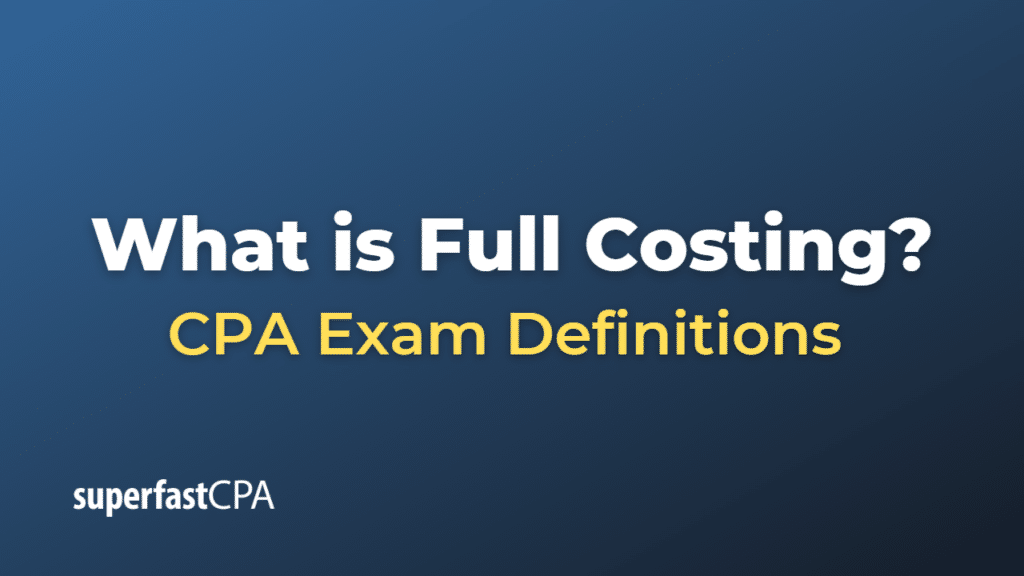Full Costing
Full costing, also known as absorption costing, is a method in managerial and cost accounting where all direct costs and all production costs are included when calculating the cost of a product. This includes not just direct materials and direct labor, but also both variable and fixed manufacturing overhead costs.
Here’s a breakdown of the costs included in full costing:
- Direct Costs: These are costs that can be directly attributed to the production of a specific product, such as the cost of raw materials and direct labor.
- Variable Manufacturing Overhead Costs: These are costs that vary with the level of production, such as utilities or indirect materials.
- Fixed Manufacturing Overhead Costs: These are costs that remain constant regardless of the level of production, such as rent, property taxes, and salaries of certain factory workers.
In full costing, all these costs are allocated to the goods produced, and they become part of the inventory valuation. As a result, some of the fixed overhead costs do not immediately impact the income statement (and thus the profit or loss for the period) as they are included in the cost of goods sold only when the corresponding products are sold. This differs from variable costing, where fixed overhead is treated as a period cost and expensed in full against revenue of the period in which they are incurred.
One key advantage of full costing is that it complies with Generally Accepted Accounting Principles (GAAP), and thus is used for external financial reporting. It also provides a more comprehensive view of product cost by including fixed overhead.
However, a drawback is that it can make it more difficult to see the impact of volume changes on profits, as changes in production volume affect the amount of overhead allocated to each unit produced. It can also lead to potentially misleading profitability analysis in the short run, as unsold inventory can result in shifting costs to future periods. This is why, in addition to full costing, many managers also use variable costing for internal decision-making purposes.
Example of Full Costing
Imagine a company, ToyMaker Inc., that manufactures toy cars. Here’s how ToyMaker would use the full costing method:
- Direct Costs: ToyMaker determines that the direct costs for each toy car are $5, which include $3 for the materials (plastic, paint, etc.) and $2 for direct labor.
- Variable Manufacturing Overhead Costs: ToyMaker calculates that the variable manufacturing overhead costs, such as electricity used in the manufacturing process, add up to $1 per toy car.
- Fixed Manufacturing Overhead Costs: ToyMaker has fixed manufacturing overhead costs, such as rent for the factory and salaries of factory supervisors, which total $100,000 per year. ToyMaker produces 50,000 toy cars in a year, so the fixed overhead cost per toy car is $2 ($100,000/50,000).
Under the full costing method, ToyMaker would calculate the full cost of each toy car as $8 ($5 direct costs + $1 variable overhead + $2 fixed overhead).
Now, let’s say ToyMaker sold 40,000 toy cars in a year. The cost of goods sold would be $320,000 (40,000 toy cars * $8 per toy car), and $80,000 of fixed manufacturing overhead costs would be included in the closing inventory (10,000 unsold toy cars * $2 fixed overhead per toy car).
As a result, the remaining $80,000 of fixed overhead costs would not impact the income statement until the corresponding products are sold in a subsequent period.
This is a simplified example, but it illustrates the basic concept of full costing: incorporating all production costs, both variable and fixed, into product costs. In practice, cost allocation can be much more complex and may be based on several different allocation bases, depending on the cost behavior and the company’s costing system.












